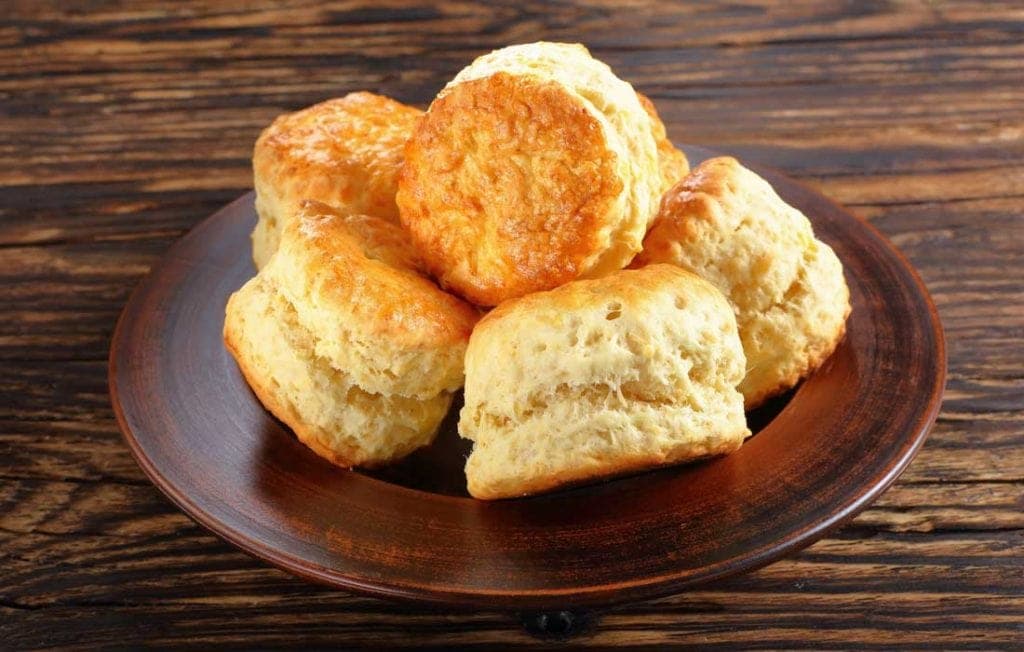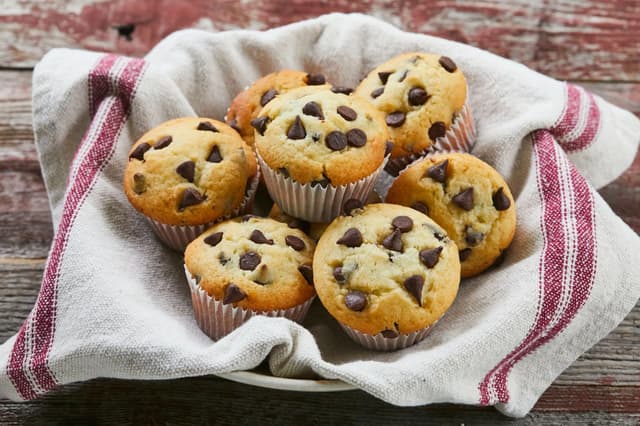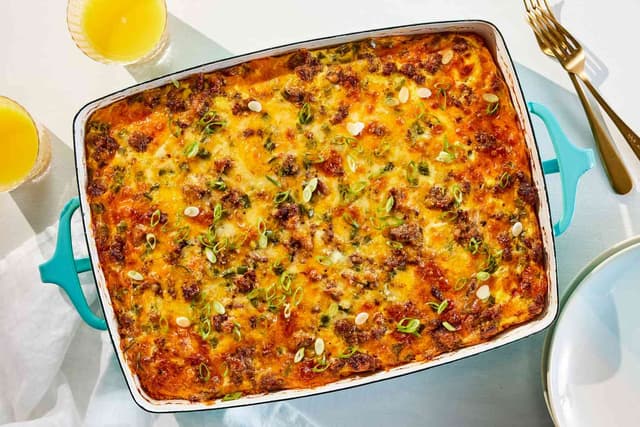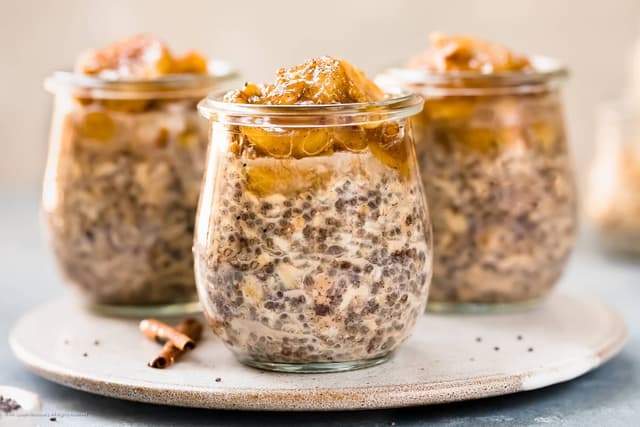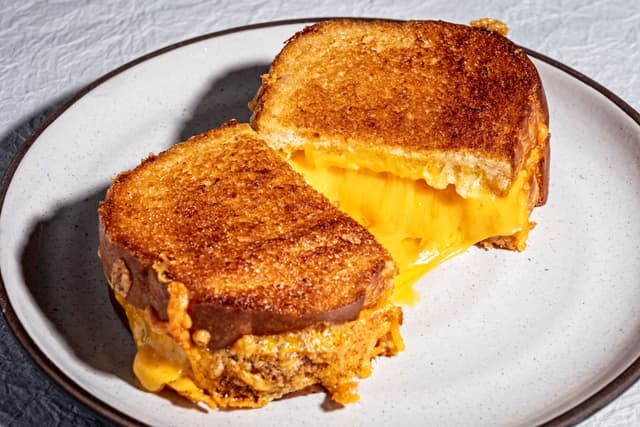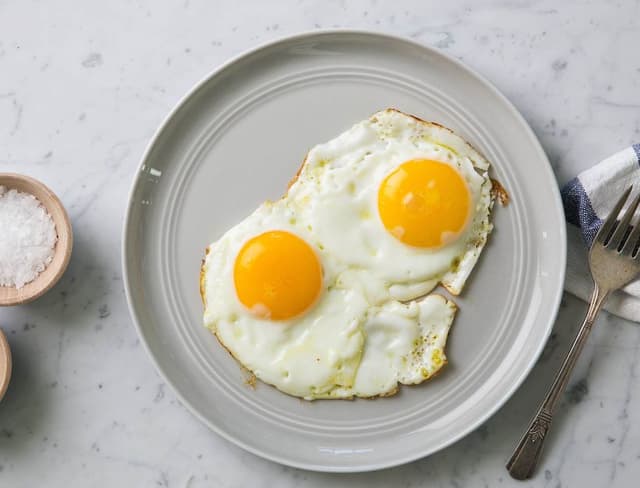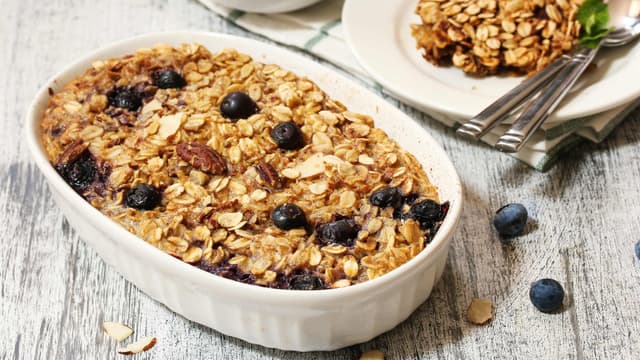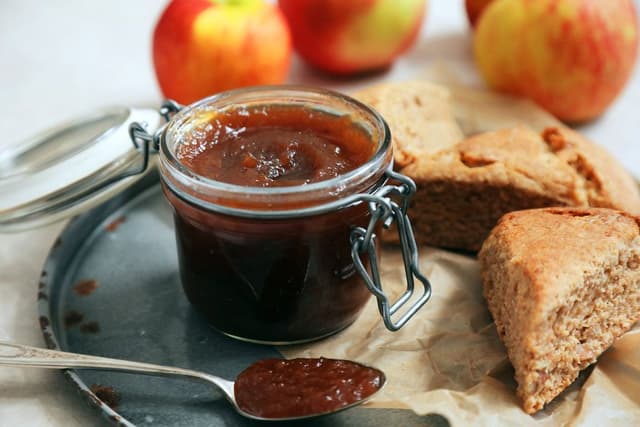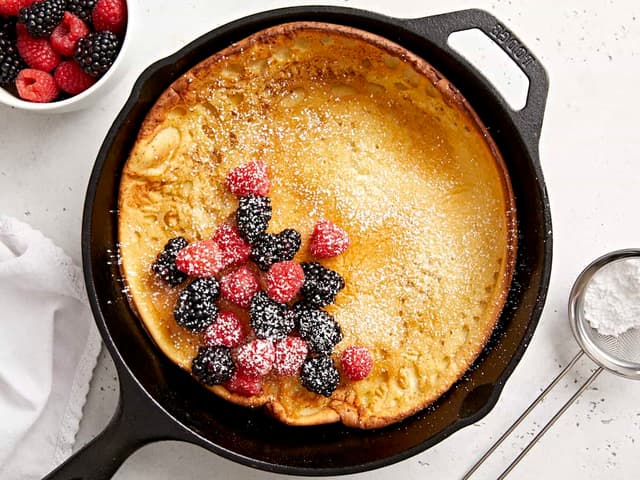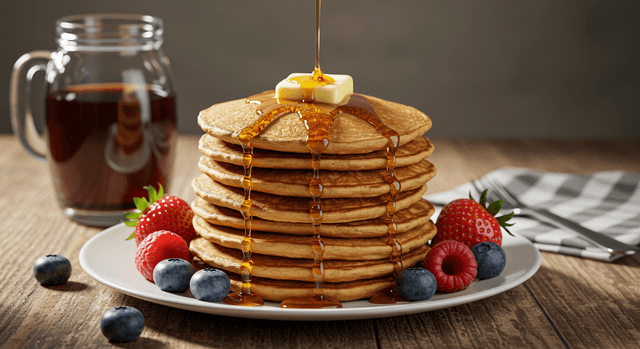The Guide to Perfect Homemade Scones
There are few culinary delights as universally comforting as a perfect scone, fresh from the oven. Imagine breaking one open to reveal a soft, fluffy, and steaming interior, all encased in a crumbly, golden-brown crust. This simple bake carries with it a sense of nostalgia and tradition, evoking images of cozy afternoons, celebratory gatherings, and the simple, profound pleasure of a well-made treat.
Scones are remarkably versatile, serving as the undisputed star of a classic British afternoon tea but equally at home as a simple breakfast, a centerpiece for a special brunch, or a comforting weekend project. This recipe is your definitive guide to mastering this timeless classic, transforming your kitchen into a haven of buttery, delicious aromas.
Why This Is the Ultimate Scone Recipe & When to Serve It
This guide is more than just a list of ingredients and instructions; it is a masterclass in the art and science of scone-making. We will demystify every step of the process, explaining not just what to do, but why you are doing it. The result is a foolproof method for creating scones that are consistently buttery, wonderfully flaky, and reliably delicious every single time.
Scones are a bake for all seasons and reasons, fitting effortlessly into any occasion that calls for a touch of warmth and elegance.
The Quintessential Afternoon Tea: Embrace tradition by making these scones the centerpiece of an elegant afternoon tea. Served on a tiered stand alongside delicate finger sandwiches, miniature cakes, and a pot of freshly brewed tea, they create an experience of pure indulgence and sophistication.
Celebratory Brunches: Elevate special gatherings like Mother's Day, bridal showers, or festive holiday breakfasts with a platter of warm, homemade scones. Their simple elegance makes any brunch feel more memorable and thoughtfully prepared.
Cozy Weekends & Unexpected Guests: The beauty of this recipe lies in its speed and simplicity. You can have a fresh batch on the table in under 30 minutes, making it perfect for those moments when friends drop by unannounced or when you simply crave a comforting, homemade treat on a quiet weekend.

Essential Ingredients (Serves 8)
- 350g Self-Raising Flour, plus extra for dusting: This flour is the structural foundation and contains pre-mixed leavening agents (baking powder and salt), ensuring a consistent, high rise and a wonderfully light texture in your final bake.
- 1 tsp Baking Powder: We add a little extra baking powder to give the scones a powerful boost. This "double-acting" leavener reacts first with liquid and then with heat, guaranteeing a light, airy crumb and impressive height.
- 85g Cold Unsalted Butter, cut into 1cm cubes: The star of flakiness. Keeping the butter cold is crucial; as it melts in the hot oven, it releases steam, creating pockets of air that separate the dough into delicate, tender layers.
- 3 tbsp Caster Sugar: This fine sugar does more than sweeten; it helps create a tender crumb by interfering with gluten development and contributes to the beautiful golden-brown color of the crust during baking.
- ¼ tsp Fine Sea Salt: An essential flavor enhancer, salt balances the sweetness and brings out the rich, buttery notes of the scone. It also plays a subtle role in strengthening the dough's structure for a better texture.
- 175ml Whole Milk: Milk provides the necessary moisture to bind the dough together. Its fat content contributes to a softer, richer scone compared to using just water, resulting in a more tender and flavorful final product.
- 1 tsp Lemon Juice: When added to the milk, the lemon juice slightly sours it, mimicking buttermilk. This acidic environment is key to giving the baking powder an extra boost, resulting in a lighter, more tender scone.
- 1 Large Egg, beaten: The egg acts as a crucial binding agent, holding the dough together while also adding richness, color, and structural integrity. A portion will be reserved for the final glaze to create a beautiful finish.
- 1 tsp Vanilla Extract: While optional in some traditional recipes, vanilla extract adds a wonderful depth of flavor. It enhances the other ingredients, adding a warm, aromatic quality that makes the scones feel truly special.

A Step-by-Step Guide to Baking Scones
The process of combining ingredients is just as critical as the ingredients themselves. The sequence of steps and the way you handle the dough directly control gluten development and fat distribution—the two primary factors that determine the final texture of your scones. Following these steps meticulously will ensure a perfect bake.
- Prepare Your Oven and Ingredients: Preheat your oven to 220∘C (200∘C Fan/Gas Mark 7) and place a baking sheet inside to get it hot; this shock of heat helps the scones rise immediately upon entering the oven. In a small jug, combine the 175ml of whole milk with the 1 tsp of lemon juice and 1 tsp of vanilla extract, then set it aside to allow the acid to slightly curdle the milk.
- Combine the Dry Ingredients In a large, preferably chilled, mixing bowl, sift together the 350g of self-raising flour, 1 tsp of baking powder, and ¼ tsp of fine sea salt. Sifting is not just for removing lumps; it is a critical step that aerates the flour, incorporating air into the mixture from the very beginning, which is the first move toward achieving a light, fluffy final texture.
- Cut in the Cold Butter: Add the 85g of cold, cubed unsalted butter to the flour mixture. Using only your fingertips or a pastry blender, quickly rub the butter into the flour until the mixture resembles fine breadcrumbs with a few larger, pea-sized pieces of butter still visible. It is vital to work quickly to ensure the butter stays as cold as possible and does not melt from the heat of your hands.
- Add Sugar and Make a Well: Stir the 3 tbsp of caster sugar into the butter and flour mixture until it is just combined. Next, use your hand or a spoon to create a deep well in the center of your dry ingredients. This simple technique will help you incorporate the wet ingredients evenly and quickly, preventing the need to over-mix the dough later on.
- Incorporate the Wet Ingredients: Reserve about 1 tablespoon of the beaten large egg in a small dish for the final glaze. Pour the rest of the beaten egg and the entire milk mixture into the well you created. Using a cutlery knife or a spatula, use cutting motions to quickly and gently bring the ingredients together until they form a soft, slightly sticky, and shaggy dough. Do not be tempted to knead or overwork it; a lumpy, messy-looking dough is exactly what you want at this stage.
- Shape the Dough (Gently!): Tip the dough out onto a lightly floured work surface. With well-floured hands, gently bring the dough together and fold it over on itself just two or three times—this lamination technique creates subtle layers without developing tough gluten strands. Pat the dough out to a thickness of about 4cm (roughly 1.5 inches); a thick dough is absolutely essential for achieving impressively tall scones.
- Cut the Scones: Take a 5cm round cutter (smooth-edged is best for a clean cut) and dip it into flour to prevent the dough from sticking. Press the cutter straight down into the dough with firm, even pressure. Critically, do not twist the cutter, as this action seals the edges of the scone and prevents an even, towering rise. Gently press the leftover dough scraps back together to cut out the remaining scones.
- Glaze and Bake to Perfection: Arrange the cut scones on a sheet of baking parchment, leaving a little space between them. Brush the tops—and only the tops—with the reserved beaten egg, as letting it drip down the sides can glue the scone to the tray and hinder its rise. Carefully slide the parchment paper with the scones onto the hot baking tray already in the oven and bake for 10-15 minutes, or until the scones are well-risen and a beautiful, rich golden-brown.

Expert Tips for Scone Perfection
Achieving scone mastery lies in controlling three key variables: temperature, gluten, and leavening. These professional tips are direct interventions designed to manage those variables, guaranteeing a superior result every time.
- The Chill Factor is Non-Negotiable: For the absolute flakiest texture and highest possible rise, it is imperative that your ingredients, especially the butter and milk, are cold. To take this to the next level, try grating your butter while it is frozen and then returning it to the freezer. After shaping, chill the scones on their baking tray in the freezer for 15-30 minutes before they go into the oven. This crucial step re-chills the fat and allows the gluten to relax, leading to an exceptionally tender scone.
- A Gentle Hand Prevents Toughness: The single most common mistake in scone making is overworking the dough. Excessive mixing and kneading develop the flour's gluten proteins, resulting in scones that are tough, dense, and chewy rather than light and flaky. Mix only until the ingredients just come together into a shaggy mass. The dough should look imperfect. A light, swift touch is your greatest asset in the pursuit of the perfect scone.
- The Perfect Cut for an Even Rise: When cutting your scones, always use a floured, sharp-edged cutter and press straight down with decisive pressure. Never, ever twist the cutter as you press or remove it. This twisting motion smears and seals the edges of the scone, effectively gluing the layers together and inhibiting its ability to rise evenly in the oven. This is often the cause of frustratingly lopsided or flat bakes.
- Choose Your Glaze Wisely: The final brush you give your scones before they enter the oven has a significant impact on their final appearance. A milk wash will encourage a softer, matte, golden-brown top, which is lovely and traditional. An egg wash, as specified in our recipe, provides a much richer, deeper golden color and a beautiful, glossy shine that looks professional and appealing. For either glaze, take care to avoid letting it drip down the sides of the scones, as this can also hinder the rise.

Serving, Spreading, and Sipping: Creative Ideas
The scone is a perfect canvas, its lightly sweet and buttery profile designed to be complemented by a variety of rich, sharp, or sweet accompaniments. The cultural traditions surrounding its service are as much a part of the experience as the bake itself.
- The Great Debate: Devon vs. Cornwall. Partake in the charming and long-standing tradition of the cream tea debate. In Devon, the custom is to split the warm scone, spread it with clotted cream first, and then add a spoonful of jam on top. In neighboring Cornwall, the method is reversed: jam is spread first to soak into the scone, followed by a generous dollop of clotted cream. We wholeheartedly encourage you to try both methods and declare your allegiance.
- Classic Companions: The holy trinity of scone toppings remains undefeated for a reason. Thick, indulgent clotted cream, a high-quality strawberry jam, and a sharp, tangy lemon curd provide the perfect symphony of richness, sweetness, and acidity. These classic pairings are essential for an authentic afternoon tea experience.
- Beyond the Classics: Feel free to get creative with your spreads. A simple drizzle of honey is delicious, as is a flavored compound butter (such as cinnamon-sugar or rosemary-herb butter). For a more decadent treat, a rich chocolate-hazelnut spread is a modern favorite. To take your scones in a savory direction, pair them with sharp cheddar cheese and a tangy onion chutney, or with herbed cream cheese and smoked salmon.
- Perfect Tea Pairings: A classic scone served with cream and jam pairs beautifully with a robust black tea that can stand up to the rich flavors. We recommend a traditional English Breakfast tea for its full-bodied character or a fragrant Earl Grey, whose bergamot notes provide a delightful contrast to the sweetness of the jam.

Tips for Storing and Reheating
Scones have a notoriously short shelf life and are undeniably best when fresh. However, with proper storage, you can extend their enjoyment and combat the primary enemies of a good scone: moisture loss and staling.
Storing Leftovers
- Room Temperature: Scones are at their peak on the day they are baked. Should you have any leftovers, allow them to cool completely to prevent condensation, then store them in an airtight container at room temperature. They will remain enjoyable for up to two days.
- Freezing Baked Scones: For longer-term storage, freezing is the best method. Once completely cool, place the scones in a single layer in a freezer-safe bag or an airtight container. It's wise to place a sheet of parchment paper between layers to prevent them from sticking together. They will keep well for up to 3 months.
Reheating Tips
- From Room Temperature: To bring day-old scones back to life, warm them in an oven preheated to 150∘C (300∘F) for about 5-10 minutes. This gentle heat will restore their soft interior and slightly crisp exterior, making them taste almost freshly baked.
- From Frozen: You can reheat frozen baked scones using the same oven method, simply adding a few extra minutes to the warming time. Alternatively, for a quicker thaw, you can leave them to defrost at room temperature for 2-3 hours before warming.
- The Microwave Method: While the oven provides the best texture, a microwave can be used in a pinch for a single scone. Heat on high for just 10-20 seconds. Be very careful not to overheat, as this can quickly make the scone tough and chewy.
Conclusion
There is a unique and profound satisfaction that comes from baking a batch of perfect scones from scratch. It’s a simple process that yields extraordinary results, filling your home with the comforting, buttery aroma of a timeless classic. We encourage you to roll up your sleeves, embrace the gentle rhythm of mixing and shaping, and treat yourself and your loved ones to the simple, elegant pleasure of a truly perfect homemade scone.
Frequently Asked Questions
Q: Why are my scones dry and dense instead of light and flaky?
A: This common issue is usually caused by overworking the dough, which develops too much gluten and leads to a tough texture. Mix your ingredients only until they are just combined and handle the dough as little and as gently as possible. Using very cold butter and not over-baking are also key.
Q: Can I customize this recipe with add-ins like fruit or cheese?
A: Absolutely! Gently fold in about 100-150g (which is roughly ¾ to 1 cup) of your chosen add-ins, such as dried fruit, chocolate chips, or grated cheese, at the same time you add the sugar. If using fresh berries, it's best to use them frozen to prevent them from breaking apart and making the dough too wet.
Q: My scones didn't rise and spread out flat. What went wrong?
A: The most likely culprit is that your butter was too warm when you started, or you didn't chill the shaped dough before baking, causing the fat to melt prematurely. Also, ensure your baking powder is fresh (less than six months old) and remember to press the cutter straight down without twisting it to allow for an even rise.
Q: What's the difference between using milk, buttermilk, or heavy cream?
A: The fat and acid content of the liquid you choose significantly affects the final texture of the scone. Milk creates a classic, reliable scone. Buttermilk (or milk with lemon juice, as in this recipe) reacts with the leaveners to produce an exceptionally tender crumb. Heavy cream results in the richest, softest, most cake-like scone possible.
Works cited
- Classic British Scones - What Jessica Baked Next, accessed July 17, 2025, https://whatjessicabakednext.com/2024/04/09/classic-british-scones/
- Cream Tea Scones Recipe | King Arthur Baking, accessed July 17, 2025, https://www.kingarthurbaking.com/recipes/cream-tea-scones-recipe
- A Brief History of the Scone - Freshways, accessed July 17, 2025, https://www.freshways.co.uk/a-brief-history-of-the-scone/
- A Short History of Scones - Ackroyd's Scottish Bakery, accessed July 17, 2025, https://ackroydsbakery.com/blogs/authentically-ackroyds/a-short-history-of-scones
- The history of afternoon tea - a great British tradition - Historic UK, accessed July 17, 2025, https://www.historic-uk.com/CultureUK/Afternoon-Tea/
- Scones Recipe | King Arthur Baking, accessed July 17, 2025, https://www.kingarthurbaking.com/recipes/scones-recipe
- Top 7 Scone Making Questions - Answered!, accessed July 17, 2025, https://www.classiccornishhampers.co.uk/top-7-scone-making-questions-answered/
- Simple Scones Recipe - Allrecipes, accessed July 17, 2025, https://www.allrecipes.com/recipe/79470/simple-scones/
- Lemon Scones, accessed July 17, 2025, https://www.scotchandscones.com/lemon-scones/
- Frequently Asked Questions - Wallace Scones, accessed July 17, 2025, https://www.wallacescones.com/faqs/
- Classic scones with jam & clotted cream - Good Food Middle East, accessed July 17, 2025, https://www.bbcgoodfoodme.com/recipes/classic-scones-with-jam-and-clotted-cream/
- The Science Behind Perfect Scones: Understanding Ingredients and Measurements, accessed July 17, 2025, https://www.ask.com/culture/science-behind-perfect-scones-understanding-ingredients-measurements
- blogs.dickinson.edu, accessed July 17, 2025, https://blogs.dickinson.edu/chemistryinthekitchensp22/2022/05/05/science-of-simple-scones-and-my-substitutions/#:~:text=The%20main%20chemical%20interaction%20happening,creating%20the%20scones'%20airy%20texture.
- www.cottagedelight.co.uk, accessed July 17, 2025, https://www.cottagedelight.co.uk/blog/tips-for-baking-the-perfect-scones/#:~:text=However%2C%20self%2Draising%20flour%20works,can%20make%20the%20scones%20heavier.
- What is self-rising flour? - Baking Bites, accessed July 17, 2025, https://bakingbites.com/2007/08/what-is-self-rising-flour/
- Science of Simple Scones and my substitutions - Dickinson Blogs, accessed July 17, 2025, https://blogs.dickinson.edu/chemistryinthekitchensp22/2022/05/05/science-of-simple-scones-and-my-substitutions/
- Scone Q&A: Your Most Frequently Asked Scone Questions Answered, accessed July 17, 2025, https://www.biggerbolderbaking.com/ask-gemma-scone-questions-answered/
- The Golden Ingredient: The Science of Using Butter in Baking - Pastry Team USA, accessed July 17, 2025, https://pastryteamusa.com/the-golden-ingredient-the-science-of-using-butter-in-baking/
- 14 Tips For Baking Better Scones - Chowhound, accessed July 17, 2025, https://www.chowhound.com/1866770/tips-for-baking-better-sones/
- Best Scone Recipe - Little Sweet Baker, accessed July 17, 2025, https://www.littlesweetbaker.com/how-to-make-scones/
- www.food.gov.uk, accessed July 17, 2025, https://www.food.gov.uk/sites/default/files/media/document/scone_reformulation_technical_guidance_summary.pdf
- Is sugar necessary in my scones? : r/AskCulinary - Reddit, accessed July 17, 2025, https://www.reddit.com/r/AskCulinary/comments/ri1kb/is_sugar_necessary_in_my_scones/
- Sugar in Baking: What Bakers Need to Know, accessed July 17, 2025, https://www.sugar.org/blog/sugar-in-baking-what-bakers-need-to-know/
- www.cerealsgrains.org, accessed July 17, 2025, https://www.cerealsgrains.org/publications/plexus/cfw/pastissues/2008/abstracts/CFW-53-1-0004.html#:~:text=The%20functions%20of%20salt%20in,and%20increasing%20dough%20mixing%20time.
- Why Salt Is Important in Baking - Shauna Sever, accessed July 17, 2025, https://www.shaunasever.com/journal/2011/06/why-salt-is-important-in-baking.html
- Function of Salt in Baking, Salt in Bread | Baker Bettie, accessed July 17, 2025, https://bakerbettie.com/the-importance-of-salt-in-baking/
- Ina Garten's Salt Tip For Delicious Scones That You'll Just Have To Trust - Tasting Table, accessed July 17, 2025, https://www.tastingtable.com/1401709/ina-garten-tip-delicious-scones-salt/
- Scones Recipe - Allrecipes, accessed July 17, 2025, https://www.allrecipes.com/recipe/20175/scones/
- How to Bake Scones | King Arthur Baking, accessed July 17, 2025, https://www.kingarthurbaking.com/learn/scones
- www.alivewithflavour.com, accessed July 17, 2025, https://www.alivewithflavour.com/post/scones#:~:text=Adding%20a%20squeeze%20of%20lemon,result%20of%20the%20two%20recipes!
- Scones - Alive with flavour, accessed July 17, 2025, https://www.alivewithflavour.com/post/scones
- Classic Scones - Paul Hollywood, accessed July 17, 2025, https://www.paulhollywood.com/post/classic-scones
- www.vanillaetc.com, accessed July 17, 2025, https://www.vanillaetc.com/what-role-does-vanilla-extract-have-in-baking/#:~:text=Vanilla%20extract%20and%20how%20important,a%20soft%20and%20fluffy%20texture.
- What Role does Vanilla Extract have in Baking? - Vanilla Etc Ltd, accessed July 17, 2025, https://www.vanillaetc.com/what-role-does-vanilla-extract-have-in-baking/
- VANILLA EXTRACT: THE SECRET INGREDIENT THAT ELEVATES YOUR BAKING GAME, accessed July 17, 2025, https://www.nyvanilla.com/blogs/blogs/vanilla-extract-the-secret-ingredient-that-elevates-your-baking-game
- Classic cheese scones - Good Food Middle East, accessed July 17, 2025, https://www.bbcgoodfoodme.com/recipes/classic-cheese-scones/
- What is the perfect size of butter chunks for scones? : r/AskBaking - Reddit, accessed July 17, 2025, https://www.reddit.com/r/AskBaking/comments/1ay8046/what_is_the_perfect_size_of_butter_chunks_for/
- Pastry Chefs: Do you have a great recipe for scones? Traditional, British scones? - Reddit, accessed July 17, 2025, https://www.reddit.com/r/recipes/comments/16ocgr/pastry_chefs_do_you_have_a_great_recipe_for/
- 5 Mistakes to Avoid When Baking Scones - The Kitchn, accessed July 17, 2025, https://www.thekitchn.com/5-mistakes-to-avoid-when-baking-scones-242301
- How to Make Scones | The Perfect Scone Recipe - Handle the Heat, accessed July 17, 2025, https://handletheheat.com/how-to-make-perfect-scones/
- How do I prevent dry scones? - King Arthur Baking, accessed July 17, 2025, https://www.kingarthurbaking.com/blog/2024/03/11/how-to-make-scones-moist
- Tips to make scones : r/AskBaking - Reddit, accessed July 17, 2025, https://www.reddit.com/r/AskBaking/comments/10ejney/tips_to_make_scones/
- The Ins and Outs of Making Scones - Little Indiana Bakes, accessed July 17, 2025, https://littleindianabakes.com/how-make-scones/
- World's Best Scones! From Scotland to the Savoy to the U.S. Recipe - Allrecipes, accessed July 17, 2025, https://www.allrecipes.com/recipe/85629/worlds-best-scones-from-scotland-to-the-savoy-to-the-us/
- Milk wash vs egg wash for scones? : r/Baking - Reddit, accessed July 17, 2025, https://www.reddit.com/r/Baking/comments/6i7lw1/milk_wash_vs_egg_wash_for_scones/
- Scones and Clotted Cream: Serving Tips and Tea Pairings for an Afternoon Treat, accessed July 17, 2025, https://goodwoods.com/blogs/news/scones-and-clotted-cream-serving-tips-and-tea-pairings-for-an-afternoon-treat
- 12 incredible ideas for scone toppings | Women's Weekly Food, accessed July 17, 2025, https://www.womensweeklyfood.com.au/quick-and-easy/scone-toppings-31832/
- 33 Best Scone Toppings: From Sweet To Savory Additions! - Pinterest, accessed July 17, 2025, https://www.pinterest.com/pin/elevate-your-scone-game-with-these-mouthwatering-toppings--502573639682373431/
- What to serve for cream tea… - Erudus, accessed July 17, 2025, https://erudus.com/editorial/the-food-agenda/what-to-serve-for-cream-tea
- www.wikihow.com, accessed July 17, 2025, https://www.wikihow.com/Store-Scones#:~:text=Freeze%20your%20scones%20for%20up,in%20the%20oven%20or%20microwave.
- Freezing and re-heating scones - Devon Heaven hamper, accessed July 17, 2025, https://www.devonheaven.co.uk/blogs/news/17070364-freezing-and-re-heating-scones
- Scones | The April Fool Bakery, accessed July 17, 2025, https://aprilfoolbakery.com/about-2/caring-for-your-april-fool-items/scones/
- Scones Weren't Made for Us, But We're Making Them Anyway - Womanly Magazine, accessed July 17, 2025, https://www.womanlymag.com/blog/2023/3/23/scones-werent-made-for-us-but-were-making-them-anyway
- What went wrong with my scones? Followed Sally's recipe : r/AskBaking - Reddit, accessed July 17, 2025, https://www.reddit.com/r/AskBaking/comments/1fmn9mn/what_went_wrong_with_my_scones_followed_sallys/
- FAQ - Victorian House Scones, accessed July 17, 2025, https://victorianhousescones.com/faq/
- How to Troubleshoot Scones That Won't Rise - wikiHow, accessed July 17, 2025, https://www.wikihow.com/Troubleshoot-Scones-That-Won%27t-Rise
- Scone and Biscuit Troubleshooting Tips - Host in Your Home, accessed July 17, 2025, https://www.hostinyourhome.com/blog/scone-troubleshooting
- How to Make Scones, Basic Scone Recipe I Baker Bettie, accessed July 17, 2025, https://bakerbettie.com/make-scones-basic-scone-recipe/
- Questions (and Answers) about Scones from Food52, accessed July 17, 2025, https://food52.com/hotline/questions/scones
